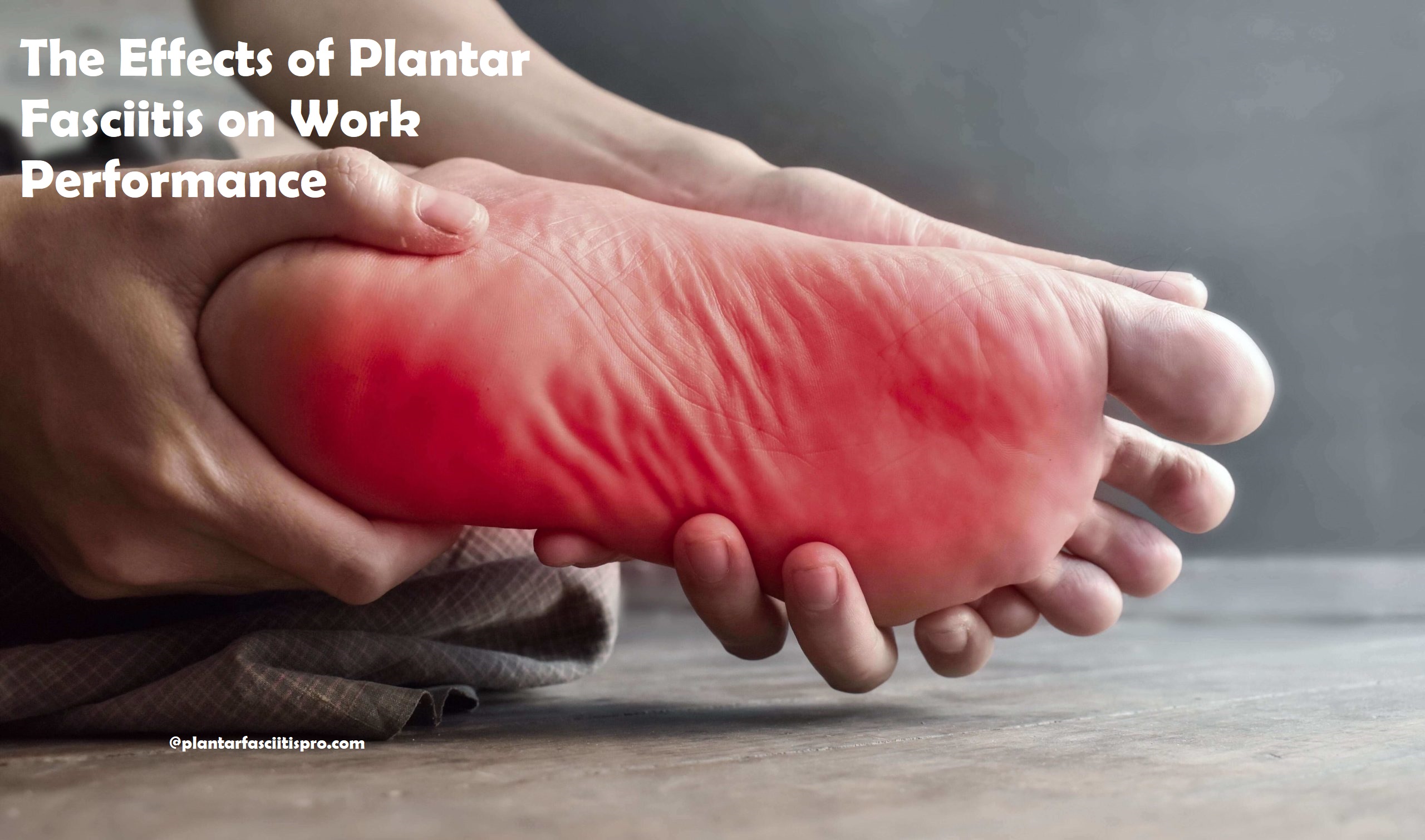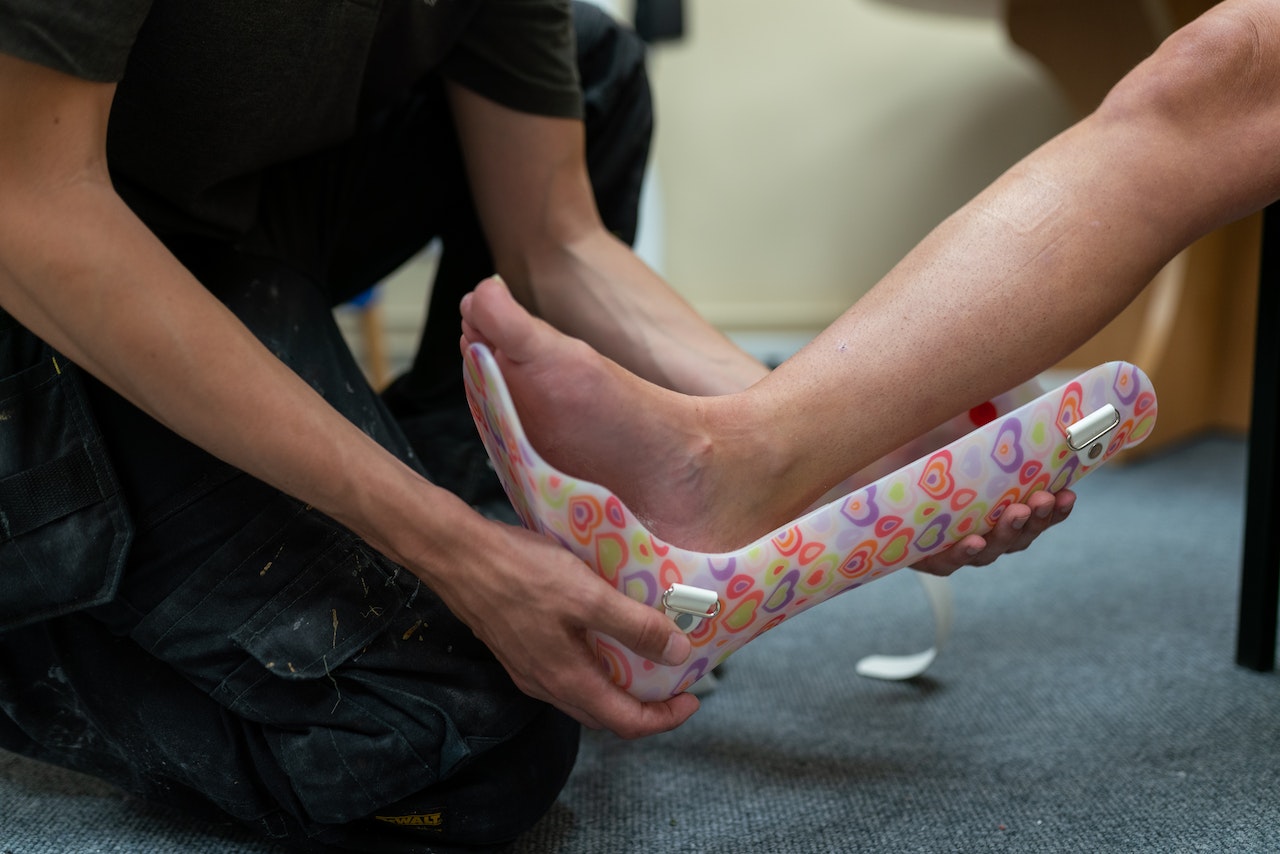Introduction
Definition of Plantar Fasciitis
Plantar fasciitis is a common foot condition that affects the plantar fascia, which is a thick band of tissue that runs along the bottom of the foot. This condition causes pain and inflammation in the heel or arch of the foot, and it is often described as a sharp, stabbing pain that is most noticeable in the morning.
- Prevalence of Plantar Fasciitis in the Workforce
Plantar fasciitis is a common condition that affects people of all ages and professions. However, it is particularly prevalent in the workforce, where people are required to stand or walk for long periods of time. According to some estimates, up to 10% of the population may experience plantar fasciitis at some point in their lives, with a higher prevalence among those who are overweight, have flat feet, or engage in activities that put repetitive stress on the foot.
- Importance of Studying the Effects of Plantar Fasciitis on Work Performance
Given the high prevalence of plantar fasciitis in the workforce, it is important to understand how this condition can impact work performance. People with plantar fasciitis may experience pain and discomfort that can limit their mobility and productivity, and in severe cases, they may need to take time off work to recover. By studying the effects of plantar fasciitis on work performance, we can develop strategies to prevent and manage this condition, and ensure that workers are able to perform their jobs to the best of their abilities.
Symptoms and Causes of Plantar Fasciitis
- Symptoms: Plantar fasciitis typically causes pain in the bottom of the heel or arch of the foot. The pain is usually worse in the morning or after prolonged periods of standing or walking. Other symptoms may include:
- Stabbing or burning pain in the heel
- Pain that worsens with activity and improves with rest
- Tightness or stiffness in the foot
- Swelling or inflammation in the heel
- Difficulty walking or standing for long periods of time
- Pain that is worse after sitting for a long time.
- Causes: The exact cause of plantar fasciitis is not known, but it is believed to be related to repetitive stress or strain on the plantar fascia, a thick band of tissue that runs along the bottom of the foot. Some of the possible causes include:
- Overuse or repetitive stress on the foot, such as from running or standing for long periods of time
- Tight calf muscles or Achilles tendon
- Obesity or sudden weight gain
- High-impact activities, such as jumping or running on hard surfaces
- Flat feet or high arches
- Wearing shoes with poor arch support or cushioning.
- Risk Factors: Certain factors may increase a person’s risk of developing plantar fasciitis, including:
- Age – Plantar fasciitis is more common in people between the ages of 40 and 60.
- Gender – Women are more likely to develop plantar fasciitis than men.
- Physical activity – Athletes and people who engage in high-impact activities are at higher risk.
- Foot mechanics – Having flat feet or high arches can increase the risk.
- Obesity – Excess weight puts more stress on the plantar fascia and increases the risk of injury.
- Occupation – People who stand or walk on hard surfaces for long periods of time, such as factory workers, are at higher risk.
III. Impact of Plantar Fasciitis on Work Performance
Plantar fasciitis can have a significant impact on a person’s work performance. The condition can cause both physical and mental limitations that can affect productivity and overall job satisfaction.
- Physical Limitations
- Standing and Walking
One of the most significant physical limitations caused by plantar fasciitis is difficulty standing and walking for prolonged periods. This can be a problem for jobs that require standing or walking, such as those in retail, hospitality, or healthcare. Even office jobs that require employees to be on their feet for long periods, such as in customer service or reception, can be affected.
- Manual Labor
Plantar fasciitis can also affect manual labor jobs that require heavy lifting or other physical activities that put stress on the feet. The condition can make it difficult for individuals to perform these tasks, resulting in reduced productivity and potential injury.
- Reduced Productivity
The physical limitations caused by plantar fasciitis can also lead to reduced productivity. When individuals are unable to perform their duties at the same level as before, their work output may suffer. This can lead to frustration for both the employee and employer.
- Mental and Emotional Effects
- Chronic Pain
Plantar fasciitis can cause chronic pain that can be difficult to manage. This pain can affect a person’s mood, concentration, and overall mental and emotional well-being. Chronic pain can make it challenging to focus on work tasks, leading to reduced productivity and job satisfaction.
- Fatigue
Fatigue is another common side effect of plantar fasciitis. This can be due to the pain caused by the condition or the extra effort required to perform tasks while dealing with the discomfort. Fatigue can make it difficult for individuals to stay focused and alert on the job, which can lead to reduced productivity.
- Depression and Anxiety
The physical and mental limitations caused by plantar fasciitis can also lead to depression and anxiety. Chronic pain, reduced productivity, and job dissatisfaction can all contribute to feelings of hopelessness and despair. These emotions can affect both the employee’s mental health and their work performance.
Strategies to Manage Plantar Fasciitis in the Workplace
- Personal Strategies
- Proper Footwear: Wearing appropriate footwear is crucial for managing plantar fasciitis in the workplace. Choose shoes that have good arch support, cushioning, and a comfortable fit. Avoid high heels, flip-flops, and shoes with thin soles.
- Stretching and Strengthening Exercises: Doing regular stretching and strengthening exercises can help alleviate plantar fasciitis symptoms. Some effective exercises include calf stretches, Achilles tendon stretches, and toe curls.
- Rest and Recovery: Resting your feet and allowing them to recover is important for managing plantar fasciitis. Avoid standing or walking for long periods, and take frequent breaks to stretch and rest your feet.
- Workplace Accommodations
- Ergonomic Footwear: If your job requires you to be on your feet for long periods, consider investing in ergonomic footwear. These shoes are designed to provide maximum support and comfort to your feet and can help alleviate plantar fasciitis symptoms.
- Alternative Work Arrangements: If your job requires you to stand or walk for long periods, consider asking your employer for alternative work arrangements. This could include allowing you to sit for certain tasks or providing a cushioned mat to stand on.
- Physical Therapy and Rehabilitation: If your plantar fasciitis symptoms are severe, consider seeking out physical therapy and rehabilitation. A physical therapist can work with you to develop a personalized treatment plan that includes stretching and strengthening exercises, as well as other therapies such as ultrasound or massage.

Conclusion
- Summary of the Effects of Plantar Fasciitis on Work Performance: Plantar Fasciitis is a painful foot condition that can significantly impact an individual’s work performance. The symptoms of the condition, such as heel pain, swelling, and stiffness, can make it difficult for an individual to stand, walk, or perform physical tasks required for their job. As a result, employees with Plantar Fasciitis may experience reduced productivity, increased absenteeism, and decreased job satisfaction.
- Importance of Early Diagnosis and Treatment: Early diagnosis and treatment of Plantar Fasciitis are crucial in preventing the condition from worsening and negatively impacting an individual’s work performance. Individuals experiencing symptoms of Plantar Fasciitis should seek medical attention promptly to receive an accurate diagnosis and appropriate treatment. Treatment options may include rest, stretching exercises, orthotics, physical therapy, and in severe cases, surgery.
- Call to Action for Employers and Employees to Address Plantar Fasciitis in the Workplace: Employers and employees both have a responsibility to address Plantar Fasciitis in the workplace. Employers can take steps to create a safe and comfortable work environment by providing ergonomic footwear, anti-fatigue mats, and standing desks. Employees can prevent Plantar Fasciitis by taking breaks, wearing supportive shoes, and performing stretching exercises. Together, employers and employees can create a work culture that prioritizes the health and well-being of employees, reducing the risk of Plantar Fasciitis and improving overall work performance.
See Also-
- Best Dress Shoes For Plantar Fasciitis
- Best Crocs For Plantar Fasciitis
- Best Compression Socks for Plantar Fasciitis
- Best Brace For Plantar Fasciitis
- Best Boots For Plantar Fasciitis

